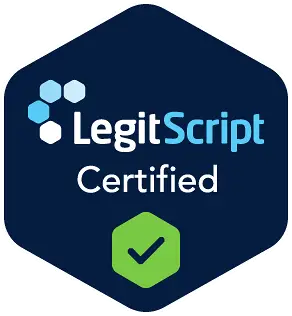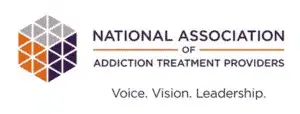What is Tramadol?
Tramadol is an opioid medication prescribed for the management of moderate to severe pain. As a Schedule IV controlled substance, as classified by the Drug Enforcement Administration, tramadol use is associated with a low risk for the development of dependence and addiction. However, even when the drug is taken for legitimate medical purposes with a legal prescription, there is the potential for addiction to develop.
Opioids decrease sensations of pain and cause feelings of euphoria, especially when large doses are taken. Tramadol is slightly different because, in addition to working on opioid receptors in the brain, it also blocks the feel-good neurotransmitters serotonin and norepinephrine from being reabsorbed back into the system. Tramadol withdrawal is more complex than withdrawal from other opioids because it can happen in two different ways: classic or atypical opioid withdrawal syndrome.
Abruptly stopping tramadol use can lead to serious withdrawal symptoms during opioid detox. By detoxing at a professional treatment facility, patients receive a safer and more comfortable detox experience. This support ensures that patients can detox completely and sets them up for successful addiction recovery.
When a person struggles with tramadol misuse, rehab may be necessary. There are many options for tramadol rehab. Different treatment modalities can address an individual’s specific needs.
This Season, Give Yourself the Gift of a Fresh Start.
Whether you are struggling with addiction, mental health or both, our expert team is here to guide you every step of the way. Don’t wait— reach out today to take the first step toward taking control of your life.
Understanding Tramadol Abuse
As an opioid, tramadol impacts the reward centers in the brain, which can lead to increased desire for the drug. These cravings may become overwhelming, and larger doses are often necessary to achieve the original, desired effect. Even when using tramadol properly by following the prescriber’s instructions, dependence and addiction may still occur.
Tramadol dependence or addiction isn’t always associated with tramadol misuse, but misusing the drug casually can lead to tramadol abuse. If a person is unable to quit taking tramadol despite the negative consequences or their efforts to quit, the issue has escalated to a larger problem.
There are usually multiple indicators that a person is misusing or abusing a drug.
Behavioral and psychological signs of tramadol abuse include:
- Using the drug to achieve a high instead of for its intended medical use
- “Doctor shopping” to get multiple prescriptions from different doctors
- Lying about losing prescriptions
- Continued tramadol use despite negative consequences
- The belief that a person needs the drug to get through the day
- Drug cravings
- Feeling as if drug use is out of control
Everyone reacts to drugs differently, based on their own physical and psychological makeup.
Some common, general side effects associated with tramadol use are:
- Tiny pupils
- Constipation
- Drowsiness/sleepiness
- Nausea
- Weakness
Symptoms of Tramadol Addiction
Opiates and pain medications are increasingly the catalysts for full-blown substance use disorders. More than one hundred and fifteen people in the United States become fatalities of opiates each and every day while over two million people have an opioid use disorder. If you are not vigilant regarding the prescribed use of tramadol for chronic pain or another related condition, your tramadol use could turn into a tramadol addiction.
Physical symptoms of tramadol addiction or tramadol dependency include:
- Panic
- Anxiety
- Nervous feelings
- Sweating
- Vomiting and nausea
- Trouble sleeping
- Body aches and pains
- Muscle spasm
- Body tremors
- Chills
When tramadol use turns into tramadol addiction, you may find yourself demonstrating drug-seeking behaviors. You could be seeking additional dosages through unnecessary emergency room visits or by reporting that currently prescribed doses have been lost through a variety of circumstances.
Tramadol Addiction Treatment
If you are battling with addictive behavior related to Tramadol, addiction treatment is available. Addiction treatment centers are well-equipped to help those who have developed an addiction to prescription medication. Not only will these professional facilities be able to help you withdraw safely from the substance, but they will also give you the tools to rebuild a clean and enriched life.
Supervised medical detox is important when beginning the journey to sobriety from all substances, but particularly for opiate dependency like Tramadol addiction. Your system will be in shock without the presence of the substance. Medical professionals can help you through the detox process successfully.
Addiction treatment does not end at the conclusion of the inpatient protocol. Aftercare planning is available to help you return to a normal routine outside of the confines of rehabilitation without feeling helpless against old triggers.
Even if you use tramadol as part of a prescribed treatment from a licensed physician, it is still possible to grow dependent. Always be vigilant and listen to your body. If you have any questions or concerns, you can always contact us confidentially to discuss your situation with a knowledgeable professional.
Tramadol Rehab
Outpatient rehab is structured so that a person can continue living at home during treatment. With this form of rehab, the patient can continue working or attending school while receiving treatment. Outpatient treatment is good for a person who has only been abusing tramadol for a short period, or for those who don’t have other mental health problems that need to be addressed.
With inpatient treatment, the patient resides in the treatment facility during treatment. School, work, and household responsibilities will need to be put on hold because of the intense focus on recovery. Inpatient treatment can lead to improved success because there are minimal outside distractions.
Seeking treatment for tramadol addiction in a supervised environment like The Recovery Village at Palmer Lake can improve your chances of success and help to keep you as comfortable as possible during the detox process. Call to speak with a representative today to find out how you can achieve your recovery goals.









